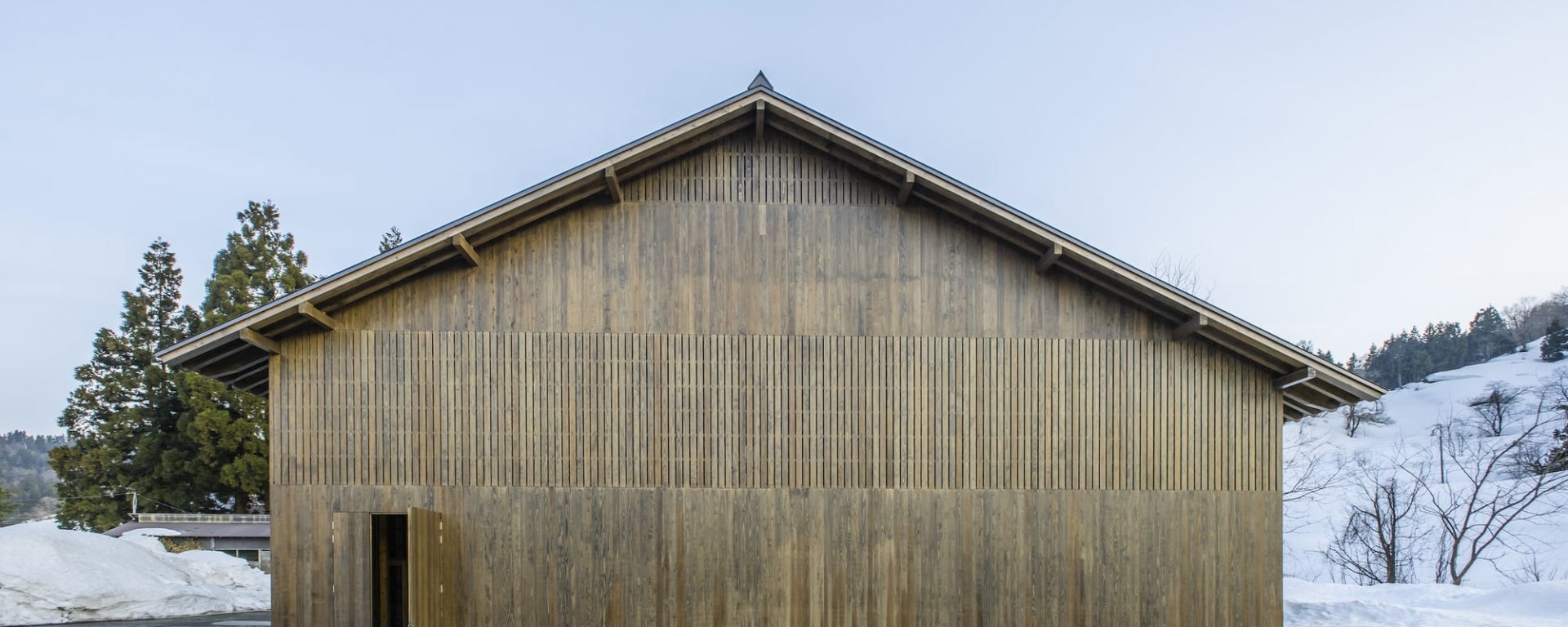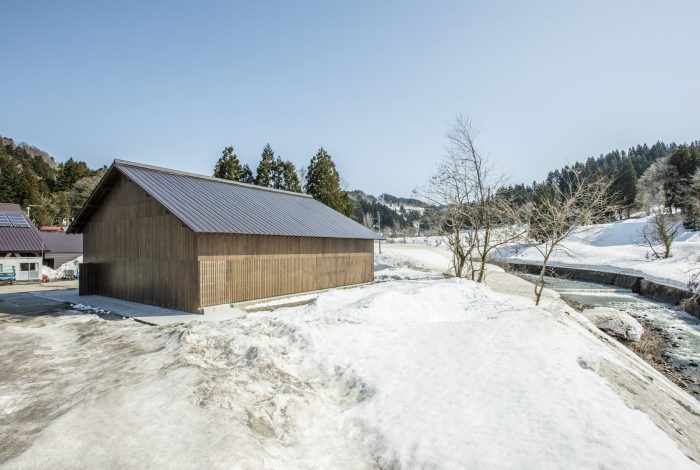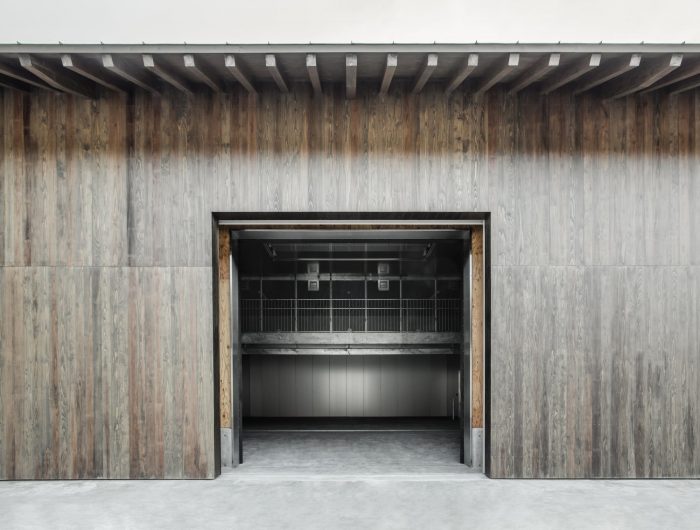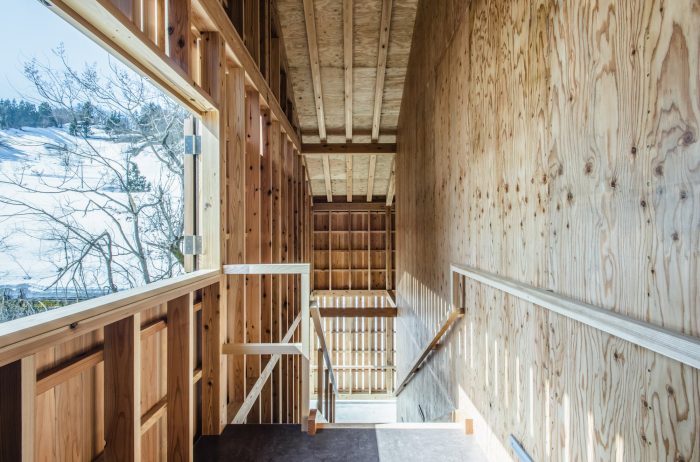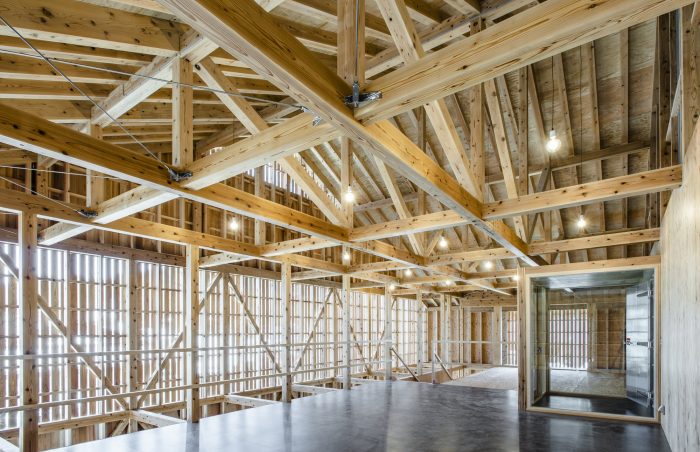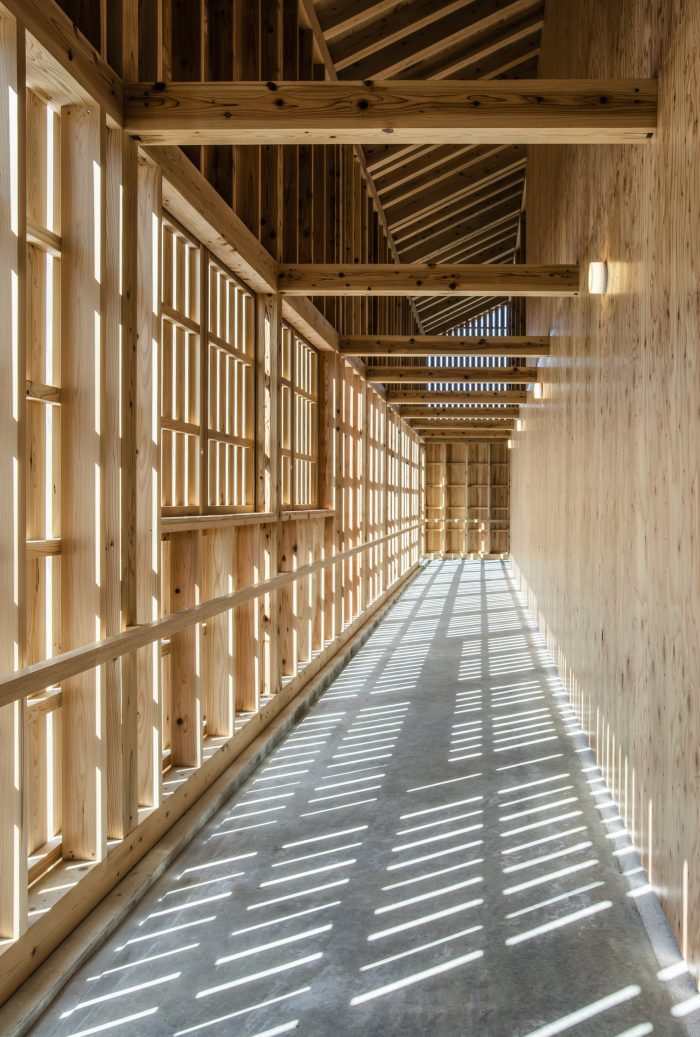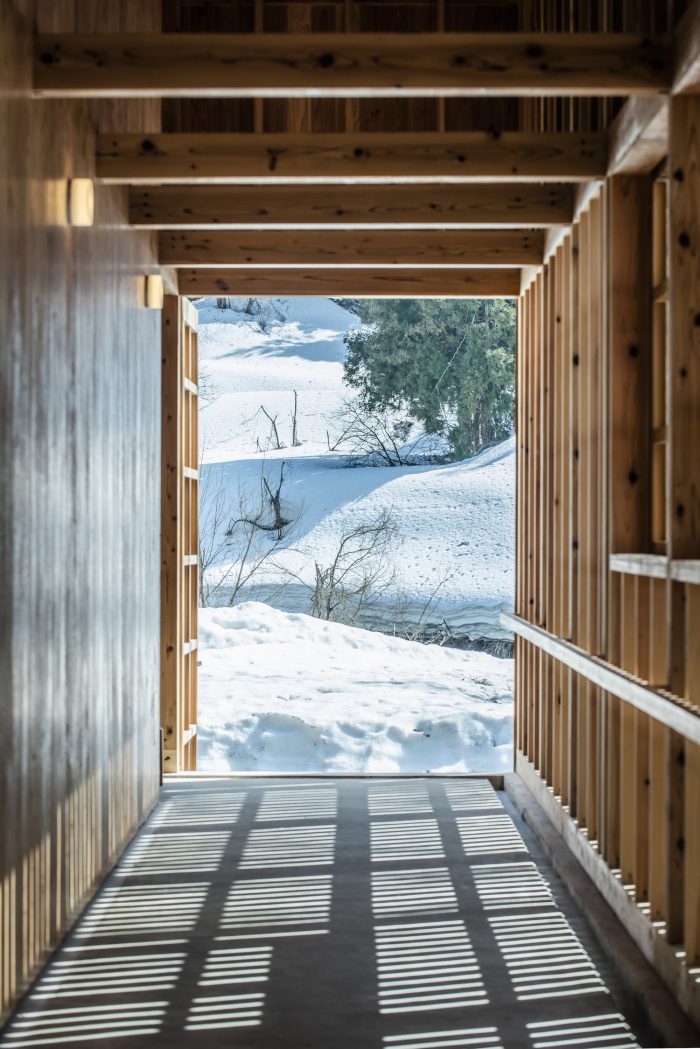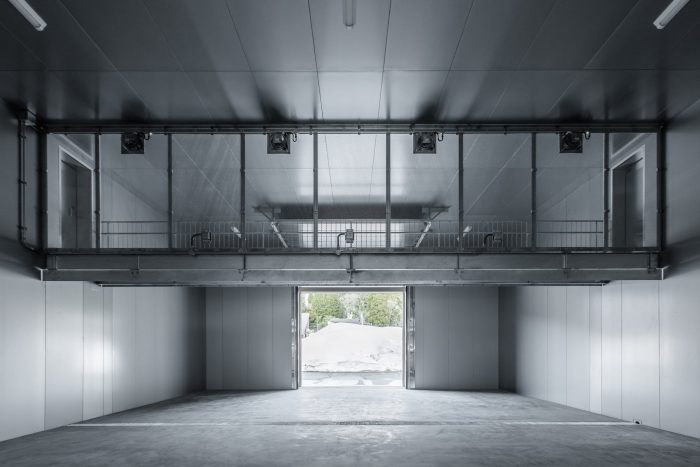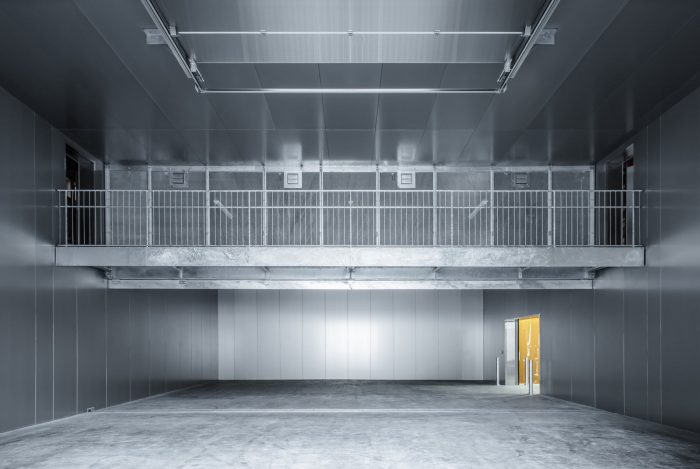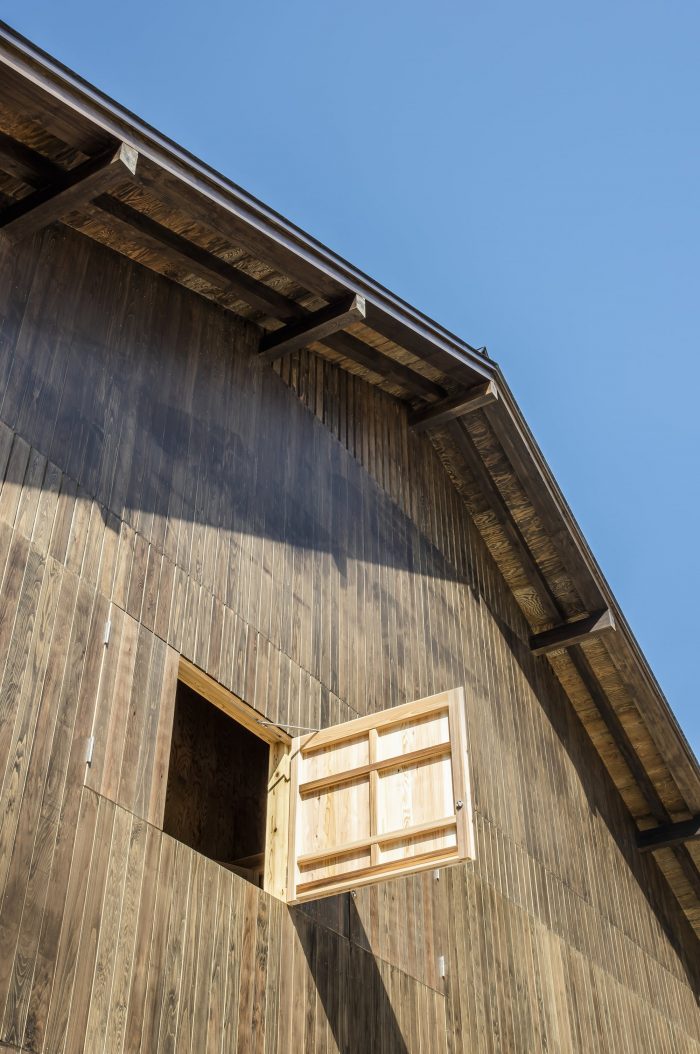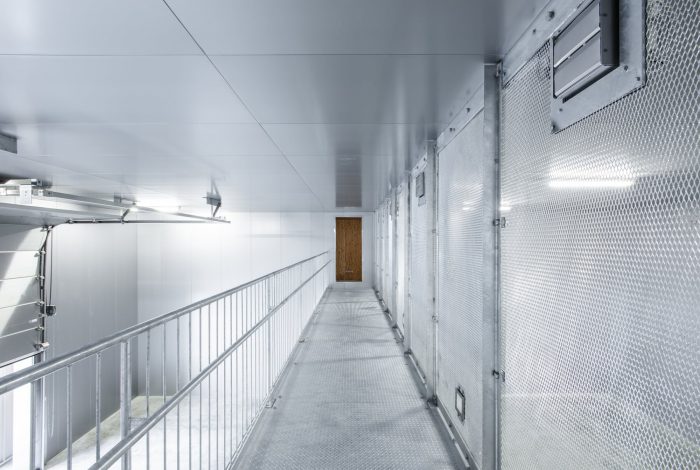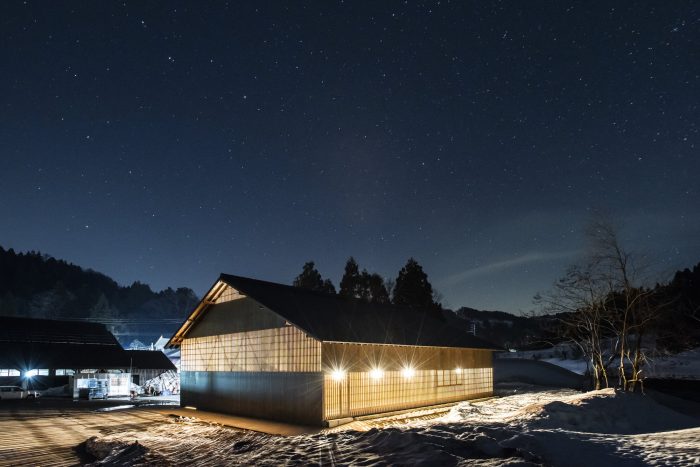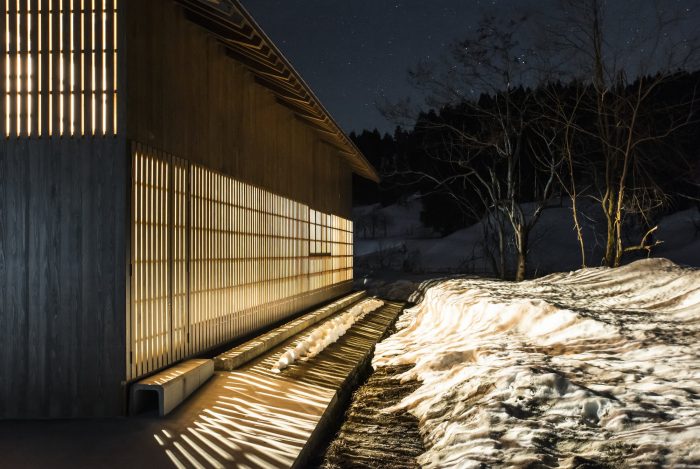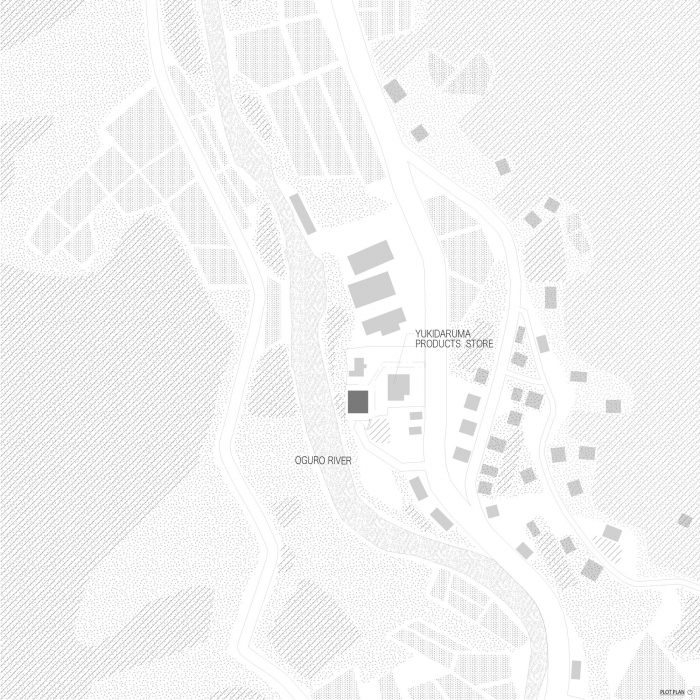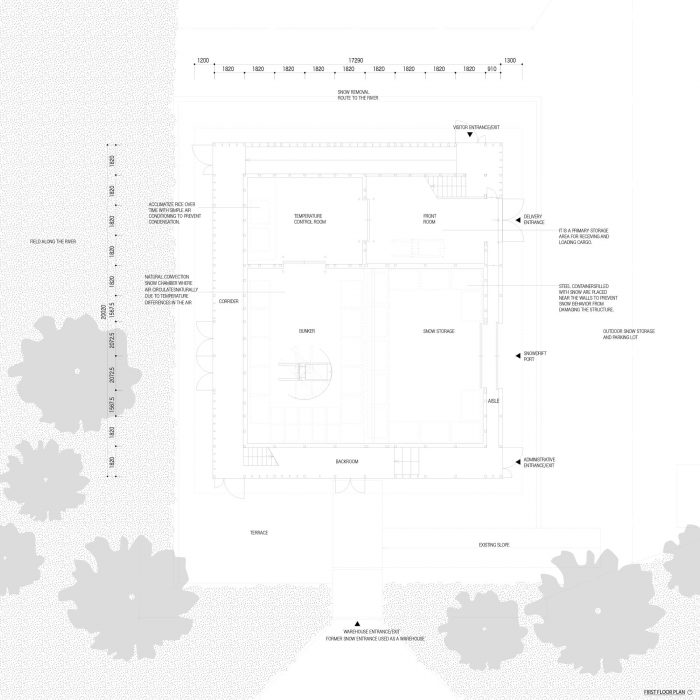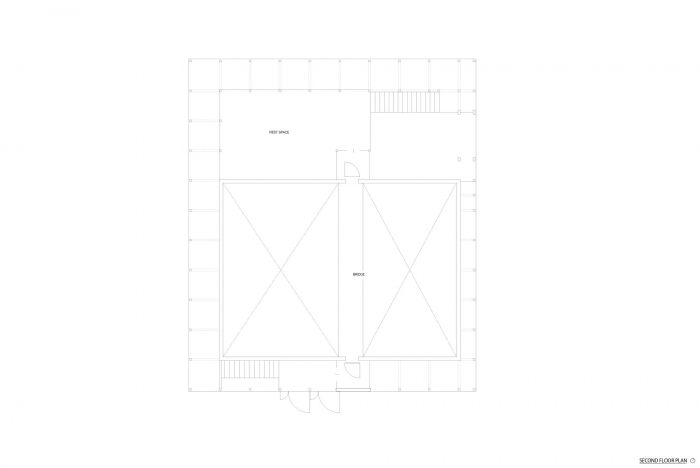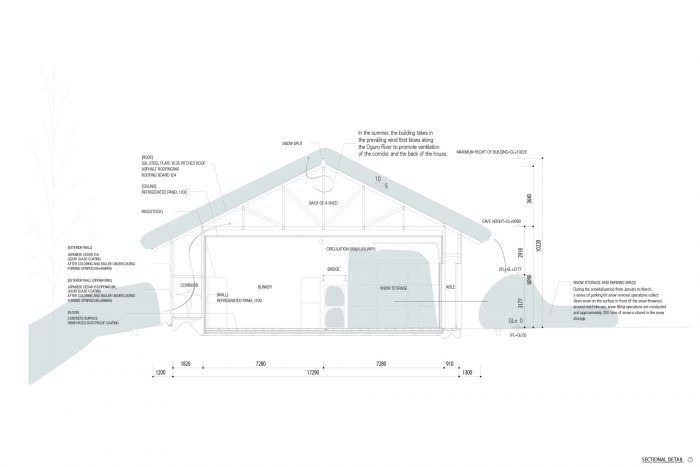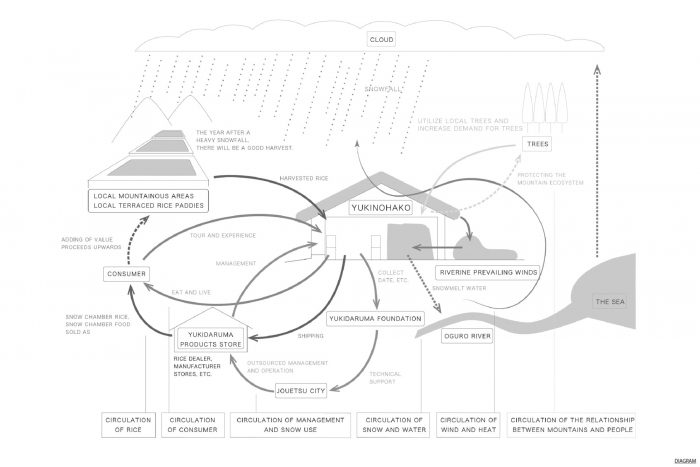这是一个建在新泻县上越市一个叫Yasuzuka的小镇上的木制雪库。雪库是一个天然的冰箱,利用雪的冷热,这次将储存在附近收割的大米。除了农民老龄化和缺乏接班人之外,山区梯田的农民一般比平原的农民生产力低,收入也往往较低。客户上越市的目标是改善这种情况。
This is a wooden snow storage built in a small town called Yasuzuka in Joetsu City, Niigata Prefecture. The snow storage is a natural refrigerator that utilizes the cold heat of the snow, and this time, rice harvested in the neighborhood will be stored. In addition to the aging of farmers and the lack of successors, farmers in terraced rice paddies in mountainous areas generally have less productivity than farmers on the plain and tend to have lower incomes. The client Joetsu City aims to improve this situation.
由于雪库内的湿度一直很高,建筑可能会被雪压损坏,所以通常选择钢筋混凝土结构,但这次作为木质结构,目的是重新思考当地林业与雪的可持续关系。如果能够实现廉价的储雪,农民就可以很容易地建造储雪,无论是新建还是改造,这将增加雪的利用而不是除雪和征服雪的动力,促进雪能的利用。雪库是一个由于其性能而必须与外界封闭的建筑。
Since the humidity inside the snow storage is always high and the building may be damaged by snow pressure, reinforced concrete construction is usually chosen, but this time, as a wooden structure, the aim was to rethink the sustainable relationship between the local forestry industry and snow. If inexpensive snow storage can be realized, farmers will be able to build snow storage easily, whether newly constructed or renovated, and this will increase the momentum for snow utilization rather than snow removal and snow conquering and promote the use of snow energy. Snow storage is a building that must be closed to the outside due to its performance.
这一次,在雪库的周边建起了一个半户外走廊,让游客可以感受到其周围环境的魅力。例如,外墙的一部分被打上了水印,让游客在冬季被用作排雪场的地方听到奥古罗河的声音和鸟鸣。对于居民来说,开口的位置是为了以令人印象深刻的方式捕捉他们日常生活中的风景。其目的是创造一个让农民为在雪国耕作而感到自豪的地方。
This time, a semi-outdoor corridor was built around the perimeter of the snow storage so that visitors can feel the charm of its surroundings. For example, a portion of the exterior wall is watermarked to allow visitors to hear the sound of the Oguro River and birdsong in an area that is used as a snow disposal site in the winter. For the residents, openings were placed to capture the scenery of their daily lives in an impressive manner. The aim was to create a place where farmers can take pride in farming in a snow country.
走廊的外墙是双层的,通过防止太阳辐射到达雪库周围的隔热墙来减少对环境的影响,同时也作为冬季的雪栅栏。走廊的长柱子被辅助梁分割成辫子状的柱子,雪库所需的跨度和顶部高度用常规的施工方法保证,使用小直径的当地雪松木材而不是大截面的层压木材。
The exterior walls of the corridor are double-skinned to reduce environmental impact by preventing solar radiation from reaching the insulated walls surrounding the snow storage, while at the same time serving as a winter snow fence. The long pillars of the corridor are divided by auxiliary beams to form braided pillars, and the span and top height required for the snow storage were secured by conventional construction methods using small-diameter local cedar timbers instead of large-section laminated timbers.
具有不同规模和特征的 “循环”,如雪、人、水稻、树木、风、热等,相互重叠。重叠的景观通过补充其中的一些循环或找到与这些循环更好的接触点而被塑造成一个叫做雪库的建筑。
“Circulation” with various scales and characteristics such as snow, people, rice, trees, wind, heat, etc. overlap. The overlapping landscape is shaped into a building called a snow storage by complementing some of these circulations or finding better points of contact with these circulations.
Architects: Kei Kaihoh Architects
Area : 356 m²
Year : 2021
Photographs :Soichiro Suizu
Manufacturers : Staco, Stucoflex
Structural Engineers : HSC
Mechanical Engineers : Kankyo Engineering INC
Design Team : Nakamura Hiroshi
Art Direction : Sanae Inoue
Technical Support : Yukidaruma Foundation
Constructions : Sato Industrial Co.Ltd.
City : Joetsu
Country : Japan

